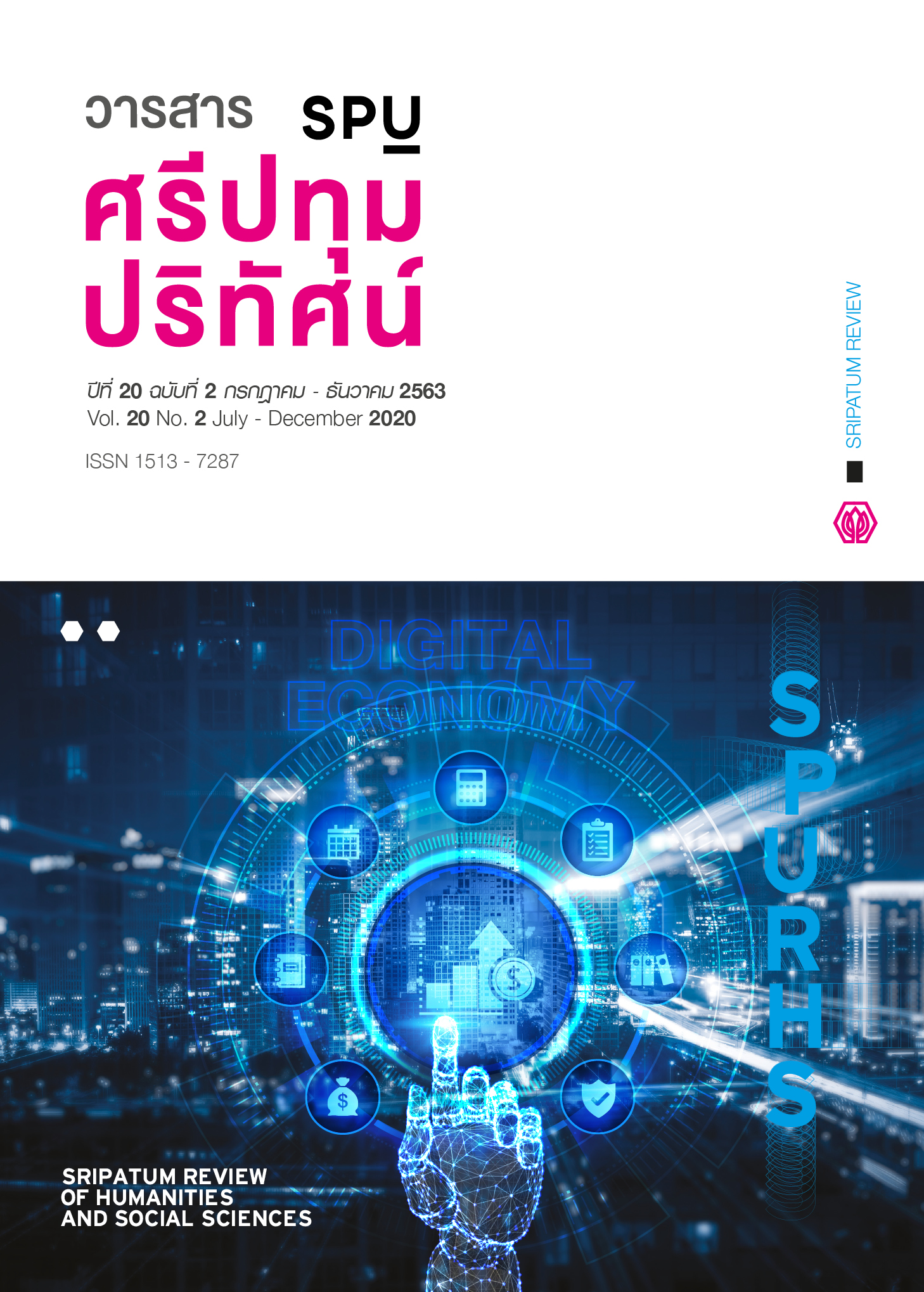Military Strategies for Strengthening the Army Leadership Potential
Main Article Content
Abstract
The purposes of this research were (1) to study the level of military strategies; (2) to study the influence of military strategies on the army leadership potential; and (3) to propose the guidelines for development of leadership potential of the Royal Thai Army. This research was designed as a quantitative research. The research sample comprised 260 high executives from 46 camps of the 1st–4th Army Area Commands, obtained by stratified random sampling. A questionnaire was used as the data collecting instrument. Data were analyzed using the structural equation modeling. The results of this research showed that (1) the military strategies that were rated at the high level were the development of knowledge and ability, the creation of innovations, the having far and wide vision, the creation of allies in the armed forces, and the decision making ability; while the military strategies that were rated at the moderate level were the integration of technology, and the adherence to morality and ethics; furthermore, the army leadership potential was rated at the high level; (2) military strategies had significant influences on the army leadership potential at the 0.05 statistical significance level; all military strategy factors could be combined to predict the army leadership potential by 88 percent; and (3) the guidelines for development of the army leadership potential via military strategies in three aspects were (1) developing knowledge and ability in integration of technology and in fast and accurate decision making; (2) showing the leadership vision that reflects the up-to-date military leadership potential in order to enhance the confidence of the sub-ordinates; and (3) using the strategies to support work performance with the adherence to morality and ethics and the creation of allies in the organizational work units of the Royal Thai Army.
Article Details
1. กองบรรณาธิการสงวนสิทธิ์ในการพิจารณาและตัดสินการตีพิมพ์บทความในวารสาร
2. บทความทุกเรื่องจะได้รับการตรวจสอบทางวิชาการโดยผู้ทรงคุณวุฒิ แต่ข้อความและเนื้อหาในบทความที่ตีพิมพ์เป็นความรับผิดชอบของผู้เขียนแต่เพียงผู้เดียว มิใช่ความคิดเห็นและความรับผิดชอบของมหาวิทยาลัยศรีปทุม
3. การคัดลอกอ้างอิงต้องดำเนินการตามการปฏิบัติในหมู่นักวิชาการโดยทั่วไป และสอดคล้องกับกฎหมายที่เกี่ยวข้อง
References
Announcement of the Office of the Prime Minister for Military Officers. (2016). Government Gazette Volume 133, Special section 203, pages 1-45. [Online]. Retrieved September 19 2016, from: http://www.ratchakitcha.soc.go.th/DATA/PDF/2559/E/067/1.PDF (in Thai)
Abney, A. C. (2016). Authentic Leadership: A Model for Professional Moral Courage. Thesis of the Degree of Doctor of Philosophy Program in Organizational Leadership, Virginia, USA: Regent University.
Ayers, R. B. (2016). Optimizing workforce performance: Perceived differences of army officer critical thinking talent across level of education.
Ball, R. D. (2016). Ethical leadership under duress: An exegetical study of Daniel 1-6. Thesis of the Degree of Doctor of Philosophy Program in Business & Leadership. Virginia, USA: Regent University.
Benmelech, E., and Frydman, C. (2015). Military ceos. Journal of Financial Economics, 117(1), 43-59.
Dunwoody, A. (2015). A Higher Standard: Leadership Strategies from America's First Female Four-star General. Boston, MA: Da Capo Press.
Department of the Army Personnel. (2017). Documentation for the Army Personnel Competency Development Project. Bangkok: Education Division Department of the Army Personnel. (in Thai) [n.p.]
Emmett, E. (2016). Ethical behavior, Leadership, and Decision-Making Walden University.[Online]. Retrieved September 19, 2016, from: http://scholarworks.waldenu.edu
Heineman, J. A. (2016). Supporting veterans: Creating a “military friendly” community college campus. Community College Journal of Research and Practice, 40(3), 219-227.
Hill, R. L. (2016). Factors affecting college choice and transfer: A study of the decision-making process of student veterans. [Online]. Retrieved December 9, 2019, from: http://digitalcommons.odu.edu/cgi/viewcontent.cgi?article=1008&context=efl_etds
Huang, J. Y. C. (2016). When opportunity doesn't knock: examining military non-investment in emerging technologies. Thesis of the Degree of Doctor of Philosophy Program in International Affairs, Science, and Technology. Georgia, USA: Georgia Institute of Technology.
Kirchner, M. J. (2018). Veteran as leader: The lived experience with US Army leader Development. Human Resource Development Quarterly, 29(1), 67-85.
Lucke, G. A. and Furtner, M. R. (2015). Soldiers lead themselves to more success: A self-leadership intervention study. Military Psychology, 27(5), 311-324.
Miranda, R. H. (2016). The Correlation Between Emotional Intelligence and Decision Making Among Military Police Officers. (2016). [Online]. Retrieved December 21,2019, from: https://digitalcommons.brandman.edu/edd_dissertations/89
Morgenthaler, J. (2015). The courage to take command: Leadership lessons from a military trailblazer. New York, USA.: McGraw-Hill Education.
Puwapatthanadol, T. (2019). The Strategies of Developing High Class Educational Institutes of The Royal Thai Army Towards Organizations in The Era of Thailand 4.0. Sripatum Review of Humanities and Social Sciences, 19(2), 21-24. (in Thai)
Samuels, S. M., Foster, C. A., and Lindsay, D. R. (2010). Freefall, self-efficacy, and leading in dangerous contexts. Military Psychology, 22(1), S117-S136.
Snider, D. M. (2005). The future of the army profession. L. J. Matthews (Ed.). Boston: McGraw-Hill.
Waldrop, M. S. (2016). Understanding Women Leaders in a Male-Dominated Profession: A Study of the United States Marine Corps’ Women Generals. Thesis of the Degree of Doctor of Philosophy. California, USA: University of San Diego. [Online]. Retrieved from: https://digital.sandiego.edu/dissertations/60


